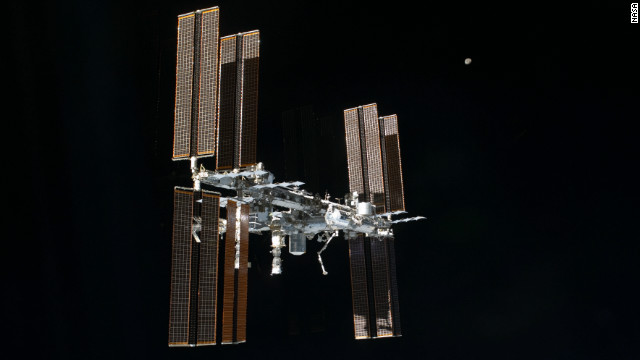 The crew of the space shuttle Atlantis took this picture of the International Space Station after leaving it in July 2011. Atlantis was the last shuttle to visit the station, which was first launched in 1998 and built by a partnership of 16 nations.
The crew of the space shuttle Atlantis took this picture of the International Space Station after leaving it in July 2011. Atlantis was the last shuttle to visit the station, which was first launched in 1998 and built by a partnership of 16 nations. 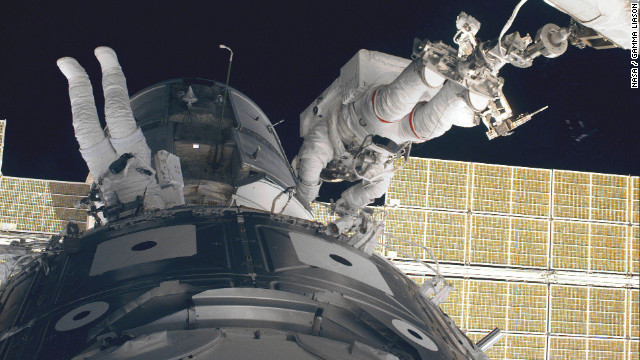 The crew of the space shuttle Endeavour initiates the station's first assembly sequence in 1998. The International Space Station includes several large modules, each launched separately and connected in space by astronauts.
The crew of the space shuttle Endeavour initiates the station's first assembly sequence in 1998. The International Space Station includes several large modules, each launched separately and connected in space by astronauts. 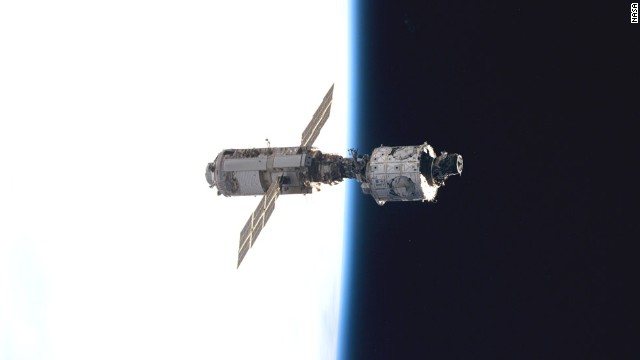 The Zarya control module, on the left with the solar panels, floats above Earth with its newly attached Unity module after the first assembly sequence in December 1998.
The Zarya control module, on the left with the solar panels, floats above Earth with its newly attached Unity module after the first assembly sequence in December 1998.  The first crew of the International Space Station, seen on board in December 2000. From the left are cosmonaut Yuri P. Gidzenko, astronaut William M. Shepherd and cosmonaut Sergei K. Krikalev.
The first crew of the International Space Station, seen on board in December 2000. From the left are cosmonaut Yuri P. Gidzenko, astronaut William M. Shepherd and cosmonaut Sergei K. Krikalev.  The Endeavour crew installs the first set of U.S. solar arrays on the station in 2000.
The Endeavour crew installs the first set of U.S. solar arrays on the station in 2000. 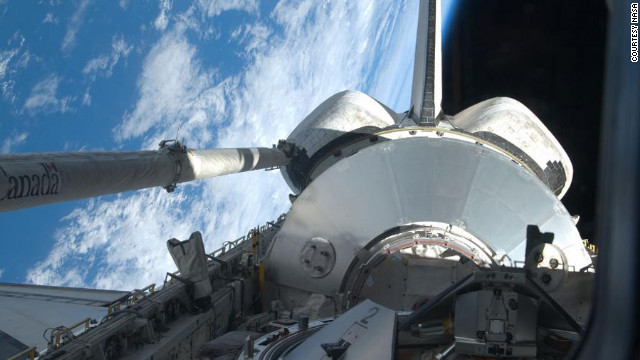 In March 2001, a space shuttle delivered the station's second crew and brought the first one home. It also brought Leonardo, the station's first Multi-Purpose Logistics Module, to the station. Leonardo carried supplies and equipment.
In March 2001, a space shuttle delivered the station's second crew and brought the first one home. It also brought Leonardo, the station's first Multi-Purpose Logistics Module, to the station. Leonardo carried supplies and equipment. 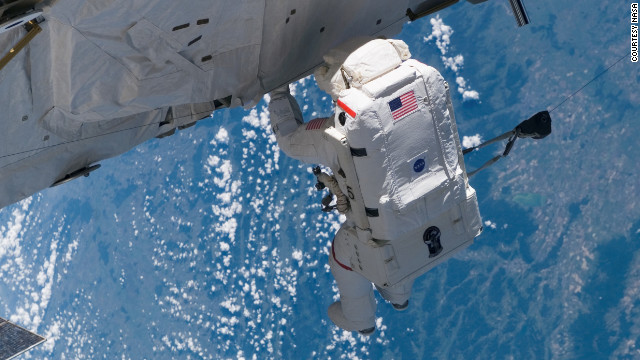 In September 2006, the space shuttle Atlantis docked with the space station, delivering solar wings and a new truss.
In September 2006, the space shuttle Atlantis docked with the space station, delivering solar wings and a new truss. 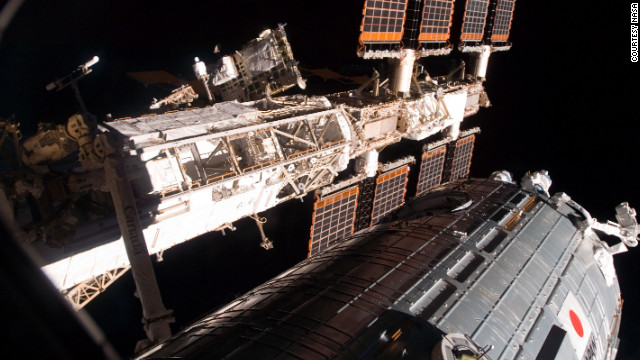 The space shuttle Discovery leaves the space station in March 2008 after its crew successfully delivered and installed the Japanese-built Kibo lab.
The space shuttle Discovery leaves the space station in March 2008 after its crew successfully delivered and installed the Japanese-built Kibo lab. 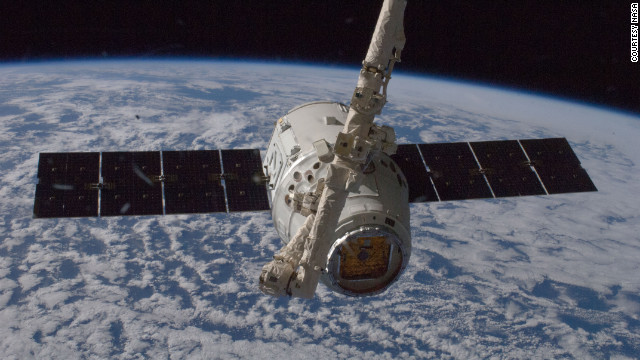 The unmanned SpaceX Dragon spacecraft connects to the space station in May 2012. It was the first private spacecraft to successfully reach an orbiting space station.
The unmanned SpaceX Dragon spacecraft connects to the space station in May 2012. It was the first private spacecraft to successfully reach an orbiting space station. 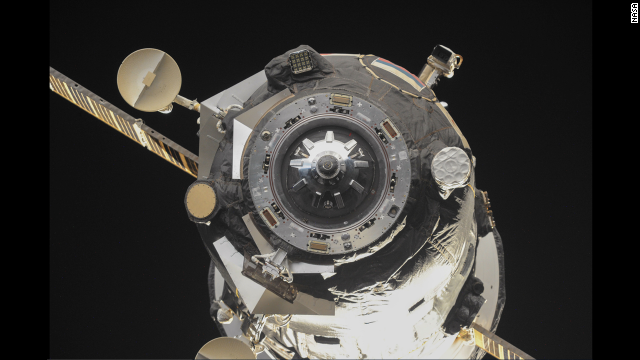 An unmanned Russian cargo craft disconnects from the space station in April 2013. The station relies heavily on ships to bring up supplies.
An unmanned Russian cargo craft disconnects from the space station in April 2013. The station relies heavily on ships to bring up supplies. 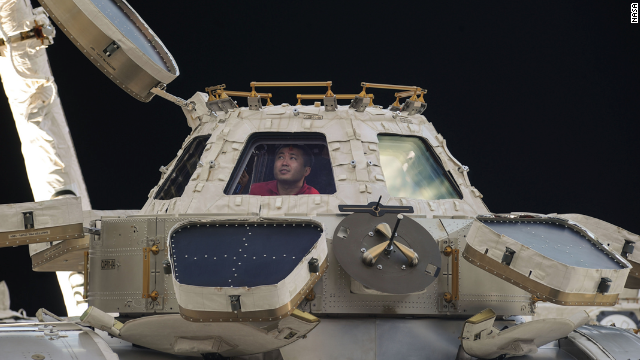 Commander Koichi Wakata of the Japan Aerospace Exploration Agency peers out of the space station's Cupola observatory on April 27. The Cupola is a dome-shaped module that allows station crew members to observe and guide activities outside the station.
Commander Koichi Wakata of the Japan Aerospace Exploration Agency peers out of the space station's Cupola observatory on April 27. The Cupola is a dome-shaped module that allows station crew members to observe and guide activities outside the station. 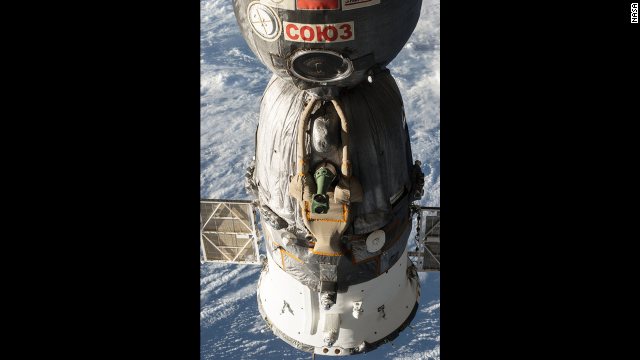 A Russian Soyuz spacecraft is docked with the space station on May 5. Since the U.S. shuttle program ended in 2011, all crew members are ferried to and from the space station on Russian rockets.
A Russian Soyuz spacecraft is docked with the space station on May 5. Since the U.S. shuttle program ended in 2011, all crew members are ferried to and from the space station on Russian rockets. 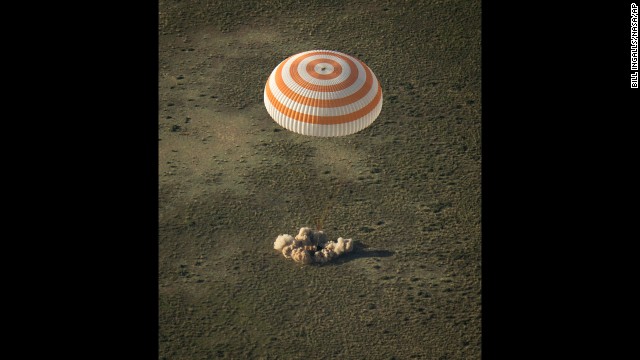 A Soyuz spacecraft is seen on May 13 as it lands in Kazakhstan with Wakata and other members of the his Expedition 39 crew.
A Soyuz spacecraft is seen on May 13 as it lands in Kazakhstan with Wakata and other members of the his Expedition 39 crew. (CNN) -- The crew of the International Space Station was not in danger while a small amount of smoke came from a vent Tuesday in a service module, NASA said in a news release.
The six-person crew called in the smoke report Tuesday about 2:40 p.m. ET. Russian flight controllers and the crew pinpointed the most likely source of the smoke as a heater and the crew turned it off. Crew members set up a fan and used a filter to air out the area.
Steve Swanson, commander of Expedition 40, said the smoke quickly subsided.
The Russian-made Zvezda service module is 43 feet long and 13½ feet in diameter. It is the site of living quarters and the galley, and the issue arose in a water reclamation unit.
SpaceX unveils new spacecraft to take astronauts to space station, back to Earth
No comments:
Post a Comment